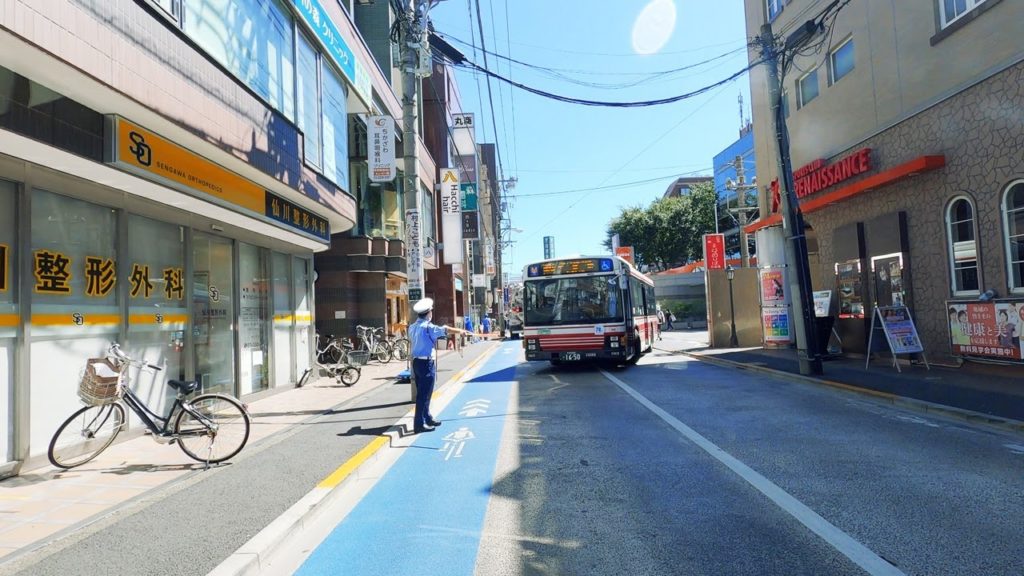Map:
Thank you for watching! We publish videos from Japan.
If you like our videos, please consider subscribing to our channel.
Youtube:
We are also on Twitter and Instagram:
Twitter:
Instagram:
00:00 Mitaka City
04:39 Sengawacho, Chofu City
08:21 Kamisoshigaya, Setagaya ward
11:06 Seijo, Setagaya ward
24:51 Futakotamagawa, Setagaya ward
35:32 Kawasaki City, Kanagawa Prefecture
38:19 Musashi-Kosugi Station
Mitaka City
The word “Mitaka” comes from “mi” (三) which means “three” , and “taka”(鷹) “falcon.” Back in the Edo period, when the samurai ruled Japan, the shogun family practiced falconry hunting (takagari, 鷹狩) in this area—and the area where falconry is practiced is called takaba (鷹場). Since there were three takaba, the area was eventually called Mitaka (three places for falconry.)
Setagaya (世田谷区, Setagaya-ku) is a special ward in Tokyo, Japan. It is also the name of a neighborhood and administrative district within the ward. The ward calls itself Setagaya City in English. Its official bird is the azure-winged magpie, its flower is the fringed orchid, and its tree is the Zelkova serrata.
Setagaya has the largest population and second largest area (after Ōta) of Tokyo’s special wards.
Setagaya is located at the southwestern corner of the Tokyo’s special wards and Tama River separates the boundary between Tokyo Metropolis and Kanagawa Prefecture.
Residential population is among the highest in Tokyo as there are many residential neighbourhoods within Setagaya. Setagaya is served by various rail services providing frequent 2 to 3 minutes headway rush hour services to the busiest train terminals of Shinjuku and Shibuya as well as through service trains which continue travelling on to the Tokyo Metro lines providing direct access to the central commercial and business districts. Most rail lines run parallel from east to west and there are no north to south rail services within Setagaya, except for Setagaya Line light rail.
Most of the land is in the Musashino Tableland. The parts along the Tama River to the south are comparatively low-lying.
(Wikipedia)
Kawasaki City – The industrial side of Tokyo
Just south of Tokyo, lining the Tama River, are the factories and refineries of Kawasaki City. This industrial area lights up at night, drawing photographers and tourists for bus and boat tours. If you’re looking to escape the tourist spots of Tokyo, come and experience the unique festivals, venues, and museums of Kawasaki.
In daylight, Kawasaki’s many factories and refineries look gray and unappealing, but at night, illuminated and plumed with smoke and steam, they take on an otherworldly beauty. The best way to see them is by boat, cruising along the Tama River to Tokyo Bay. Tours run on Saturday nights from Kawasaki Station. You can also take a Hato Bus tour through the area, departing from Tokyo Station.
Musashi-Kosugi Station (武蔵小杉駅, Musashi-Kosugi-eki) are a pair of physically separated railway interchange stations, a block from each other, located in Nakahara Ward of eastern Kawasaki, Kanagawa, Japan, operated by East Japan Railway Company (JR East) and the private-sector railway operator Tokyu Corporation. Note that the term JR East Musashi-Kosugi Station is non-specific, the physical buildings of the Yokosuka and Nambu lines run by the same company are some 400 meters away, connected by a passageway.
(Wikipedia)
Kanagawa Prefecture (神奈川県, Kanagawa-ken) is a prefecture of Japan located in the Kantō region of Honshu. Kanagawa Prefecture is the second-most populous prefecture of Japan. Kanagawa Prefecture borders Tokyo to the north, Yamanashi Prefecture to the northwest, and Shizuoka Prefecture to the west.
Yokohama is the capital and largest city of Kanagawa Prefecture, and the second-largest city in Japan, with other major cities including Kawasaki, Sagamihara, and Fujisawa. Kanagawa Prefecture is located on Japan’s eastern Pacific coast on Tokyo Bay and Sagami Bay, separated by the Miura Peninsula, across from Chiba Prefecture on the Bōsō Peninsula. Kanagawa Prefecture is part of the Greater Tokyo Area, the most populous metropolitan area in the world, with Yokohama and many of its cities being major commercial hubs and southern suburbs of Tokyo. Kanagawa Prefecture was the political and economic center of Japan during the Kamakura period when Kamakura was the de facto capital and largest city of Japan as the seat of the Kamakura Shogunate from 1185 to 1333. Kanagawa Prefecture is a popular tourist area in the Tokyo region, with Kamakura and Hakone being two popular side trip destinations.
(Wikipedia)
Filming Date: September 4th, 2020
#TokyoSmith #japantravel #japan


AloJapan.com